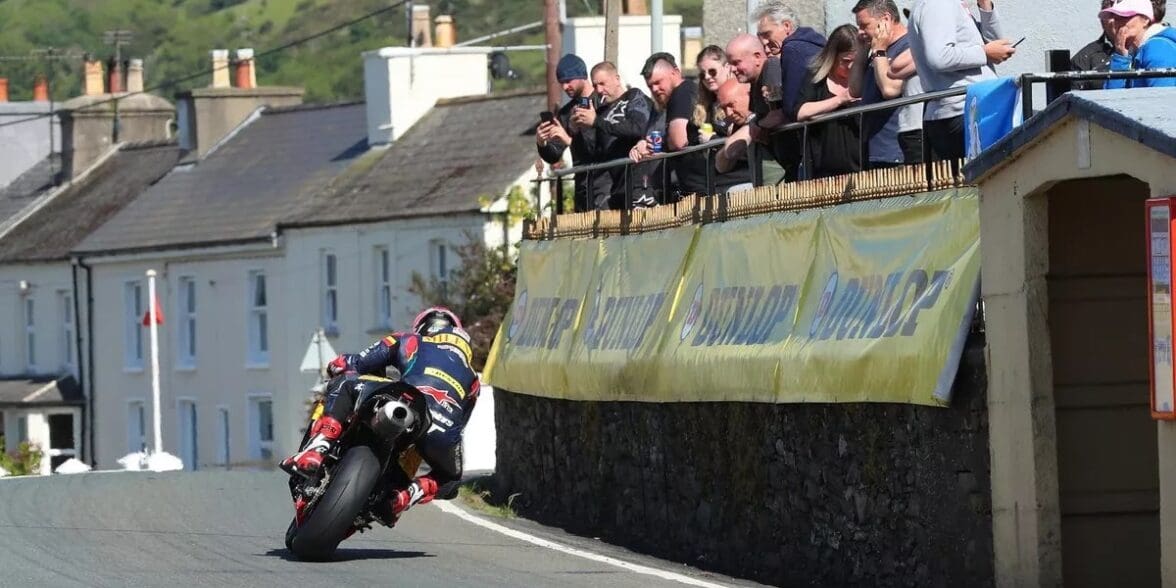As this article is being written, the 2022 Isle of Man TT has just wrapped up. A standalone event that is not part of any championship, the race is one of only a few remaining in the world that pits man and machine against the clock, with the winner of each class taking the least amount of time to complete 3 or 6 laps of the famous Snaefell Mountain Course. There are over 200 corners on the course with an estimate of 264 corners total, which is entirely composed of public roads (with more than 70 being named).
Competitors will ride at up to 200 MPH around the course, where there is quite literally no margin for error. The roads are either lined with stone walls, fences, trees—and in the mountain section, steep drop offs and even some sheer cliffs. Yet, every year that it is held, some of the best riders in the world will flock to the island to pit themselves against the course, and almost without fail, some riders will never leave the island alive.
This year alone, 5 riders lost their lives pursuing what is considered the ultimate trophy, a win in any class of race on the island. There have been calls for decades now for the race to be canceled, banned, shut down, permanently dismantled, and for it never to appear again. Yet every year, the Isle of Man TT continues to run, with some of the strongest supporters of the event being the riders themselves. This begs the question: Why race if you can die?
One of the Last “Great Races” in the World
In the world of motorcycle racing, and to a greater extent all powersports racing, there have been far fewer “great races” throughout history than there have been for motorsports. Cars have a storied history, with names like the Mille Miglia, Targa Florio, Monaco, Indy 500, Daytona, and the like all bringing to mind some of the greatest drivers, cars, and classic races ever to exist. For motorcycles, however, it’s down to a select few great races, almost all of which happen within the UK, Europe, and Africa.
Races such as the NorthWest 200, the Ulster Grand Prix, and yes, the Isle of Man TT are some of the big names and great races of the British Isles. In Europe, Finland has the Imatra TT, the Netherlands has the Hengelo Road Race, and a few other nations have tourist trophies and road races. Of course, one of the greatest races in the world usually happens in Africa—the Dakar Rally.
What is somewhat shocking about all of this, however, is that even if you go back to the start of the 1970s, almost every nation in the world had a TT race, or some form of road race around a closed section of public road that makes up the course. You couldn’t go a week in Europe without hearing about the next great road race, and the motorcyclists of the time, mostly cafe racers and grand prix riders, would travel to as many as they could get to.
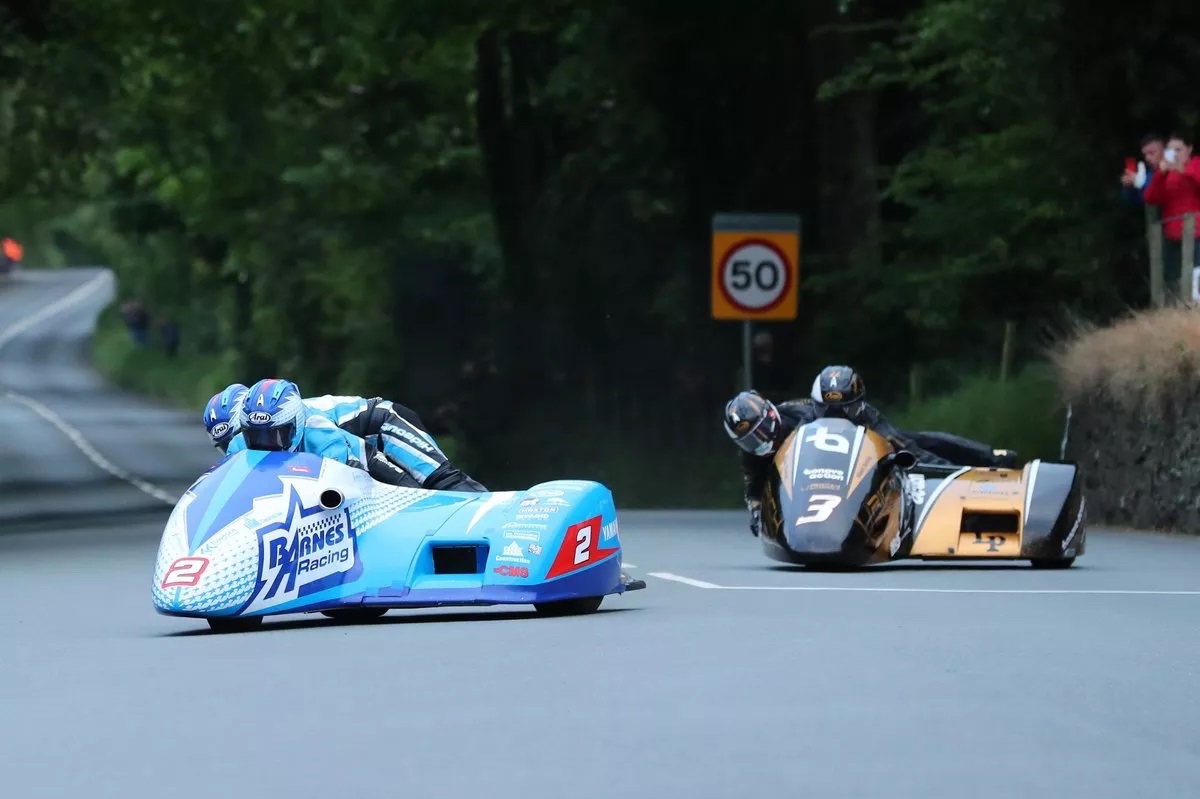
But as the world changed, motorcycles got faster and faster, superbikes appeared, supersports became an entire niche of bikes, and racers started to either die or be permanently injured in crashes. Road racing was deemed too dangerous for many nations and sanctioning bodies, which is why the FIM (the sanctioning body for MotoGP and World SBK) removed all road racing from its sanctioned races.
This, of course, was a heavy blow to those that organized and ran the road races, and with many governments not setting up their own sanctioning bodies or simply washing their hands of it, a lot of European, Asian, and North American races simply disappeared. Asia still has one of the most notoriously hard road races in the Macau Grand Prix, but that could be argued that it is a circuit race since multiple other disciplines run on the same layout.
Through some pretty complex political wrangling, Northern Ireland, which is part of the UK, was able to set up their own sanctioning body for the road races taking place there. The Parliament of the Isle of Man set up the official Manx Sanctioning Body for any and all races taking place on the island nation, and joined forces with the tourism ministry for the island to encourage both riders and spectators to visit this ruggedly beautiful place in the middle of the Irish Sea.
Why Race If You Can Die? The Answer as Told by the Riders Themselves
It was the great Joey Dunlop that summed up his philosophy of racing in one quote that will never be forgotten: “There’s a grey blur and a green blur. I try to keep on the grey one.”
The Dunlop family are pretty much road racing royalty. Joey was one of the winningest riders in road racing and TT history, with a record 26 Man TT wins and 24 Ulster Grand Prix wins. He is also the only rider to hold three hat tricks for the Isle of Man TT, which is when you win any three of the top tier classes during the same event.
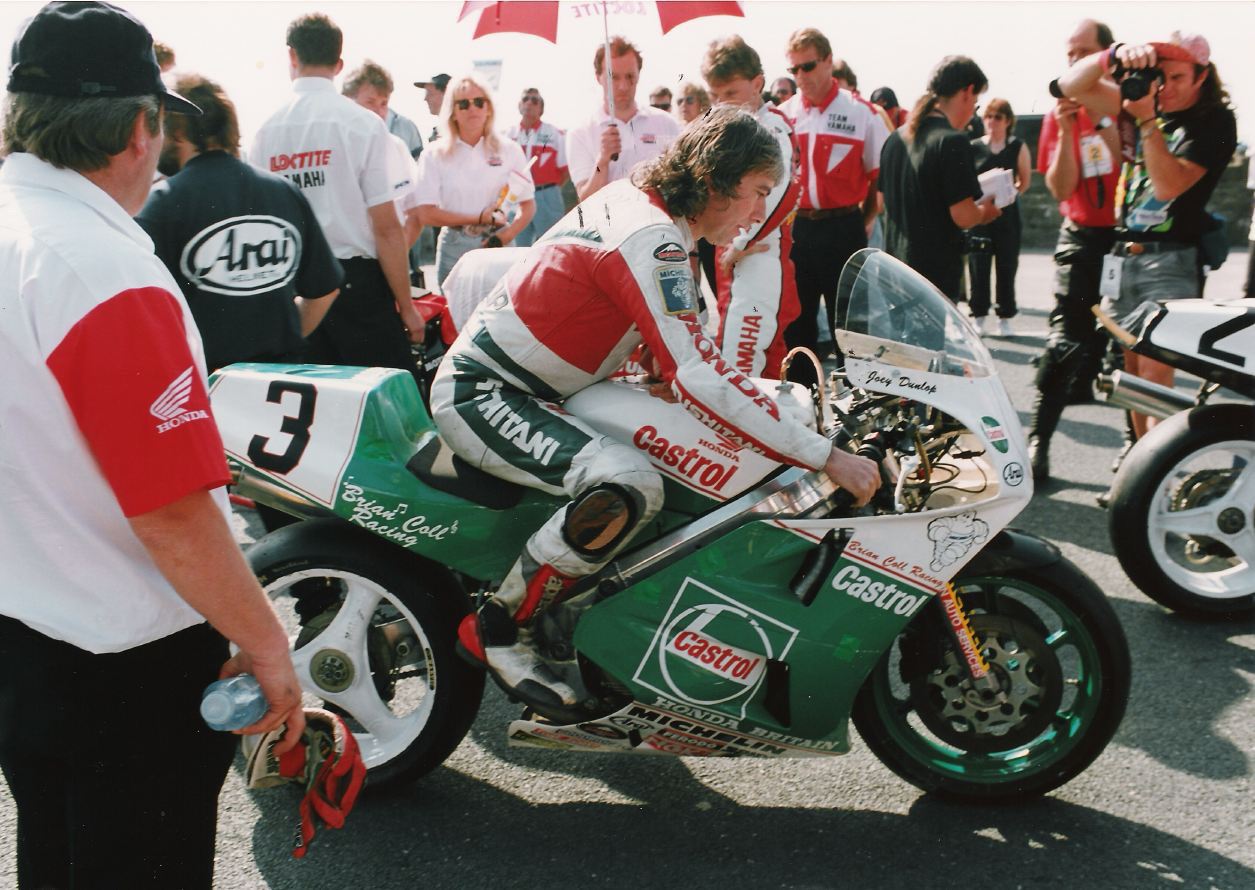
While the Dunlop family is legendary in road racing, it has also been touched by the kind of tragedy that can occur at a moment’s notice in this sport. Joey died after a crash in 2000 during the Kalevi Suursõit motorcycle TT in Tallinn, Estonia. Robert Dunlop, Joey’s younger brother and a very successful road racer of his own, died in 2008 after a crash during the practice sessions for the NorthWest 200 road race.
Robert’s son William Dunlop lost his life during a practice session for the Skerries 100 road race after his engine case cracked, which spilled oil from the sump onto the back wheel. He went headfirst into a drainage ditch that ran beside the road at well over 120 MPH and was killed instantly. Of the Dunlop dynasty, only Michael remains, the younger son of Robert and brother of William.
The reason for outlining all of this is to provide some context for the time a reporter asked Michael why he continued to race in the months after his brother’s accident. He paused for a moment, then replied “Once you’re on the bike you’ve got freedom. It’s only you. Off the bike lots of people are picking and poking at you. I’m free on the bike.” Michael has a reputation for being quite prickly and brusque—and in the rare interview that this reporter was granted, he laid out why he continued to race, despite losing his uncle, his father, and his brother to the sport.
While Michael may not be a fan of the cameras and the interviews, one of his arch-rivals loves the attention. Guy Martin is, without question, one of the greatest motorcycle racers to ever swing a leg over a bike. He has won several races, but never quite secured a Man TT win, often coming in second or third by mere seconds.
He also speaks his mind and doesn’t give two hoots about being politically correct, which is why he quickly became very popular on the road racing circuit among fans—despite the fact that he has the single thickest Lincolnshire accent known to man.
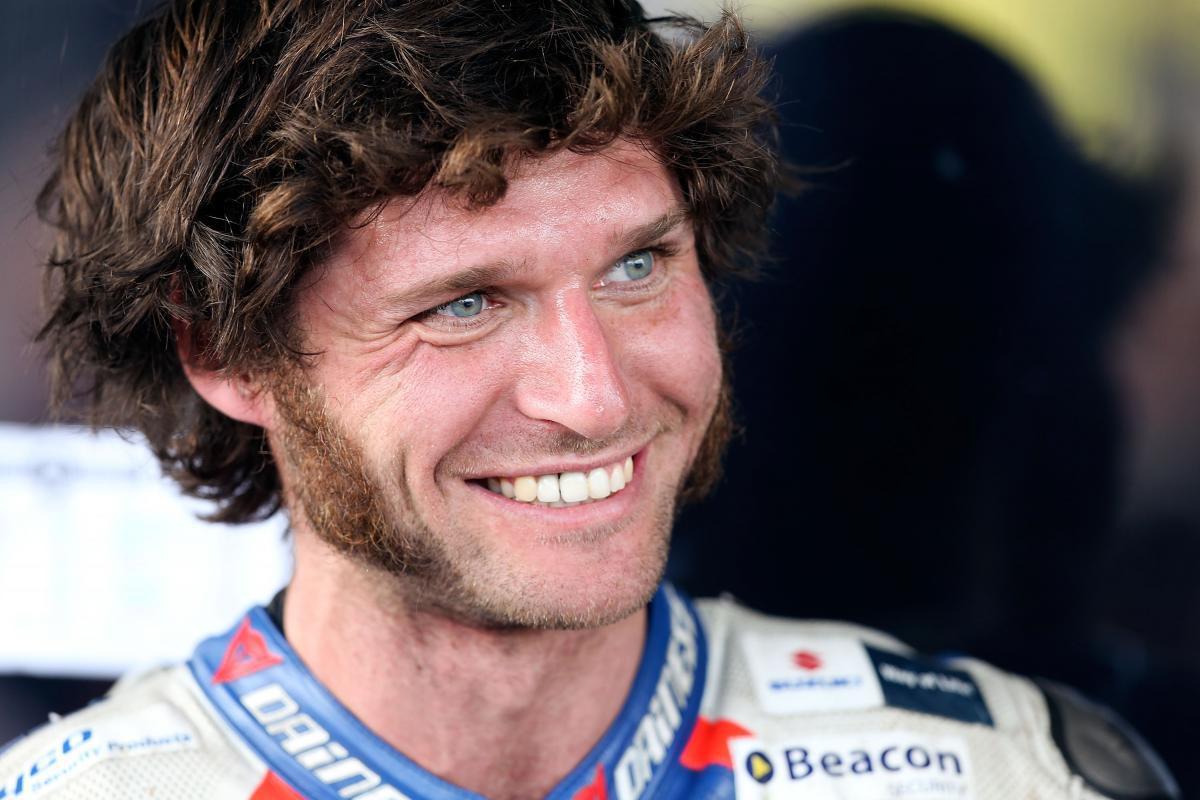
For a documentary called TT3D: Closer To The Edge, which was filmed and subsequently released as a 3D movie in the UK, he was asked what about racing at the Isle of Man kept him going even after he has had some amazingly vicious crashes that realistically should have killed him. Without even a pause of thought, he replied:
“I’m not a masochist, I’m not purposefully going out to kill myself. No, no, the opposite really, I want to succeed. But that’s the buzz you get out of trying to do that; you do end up in that position that looks like it’s going to be game over at any moment. But those positions, money cannot buy the buzz that you get—that thing that you get when you’re thinking ‘oof, that’s it, game over.’ You don’t go into a panic or anything, you just accept ‘oof, game over.’”
Throughout his racing career, which he retired from after a good 12 years of hard fought battles, Guy had several brushes with death where the invisible hand of fate seemed to move him just a little to the left or a little to the right so that he wouldn’t sustain fatal injuries. He slid out at 130 MPH during one NorthWest 200 and, in his own words, “hit the curb with me arse at 120. I walked away from that one, but we never found all the bits of the bike.” He also survived a massive crash at the deadliest corner of the Isle of Man TT, Ballagarey.
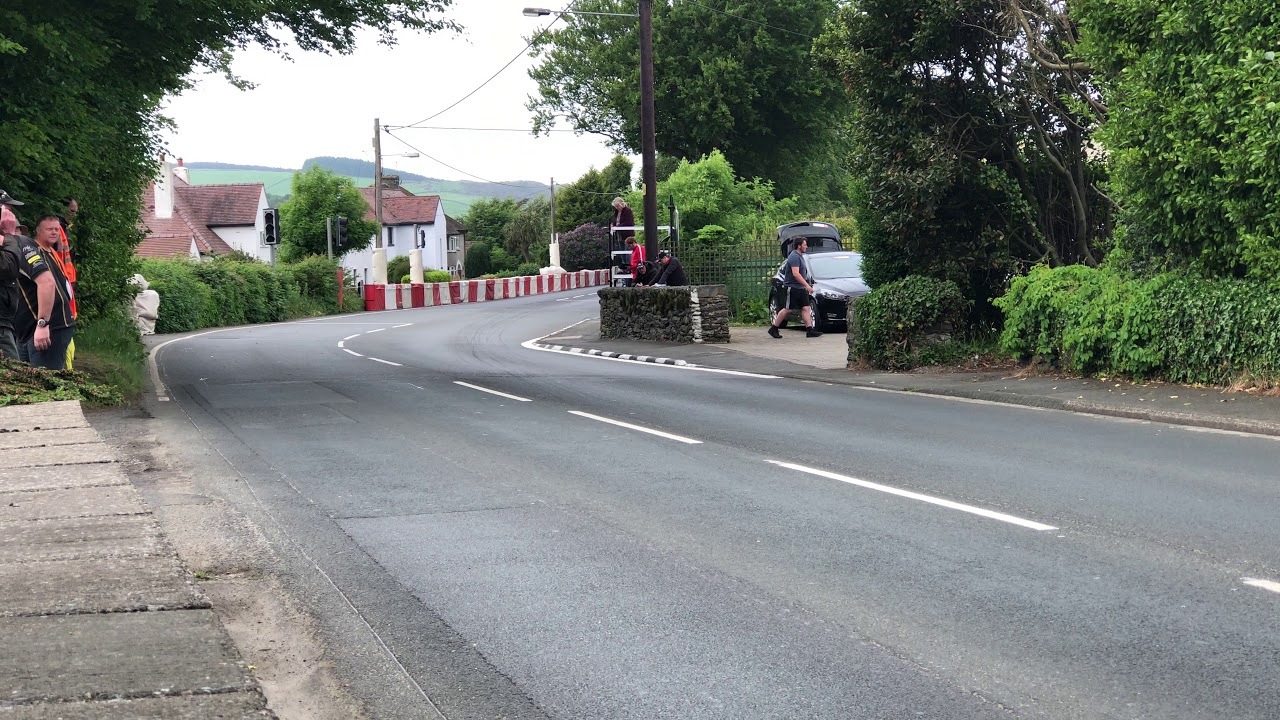
It is known as Balla-Scarey for a reason, as it is at the end of a long straight—with the riders coming in at nearly 200 MPH, top of 6th gear, then having to use engine braking to knock it down into 5th and commit to the corner. It is an out-in-out kinked corner that happens at 150 MPH, and the margins for error are infinitesimally small, literally a foot and a half variance at your entry and exit points. There is no run off, and there is a high curb on the inside near the apex which has clipped many riders’ knees.
During the 2010 Senior TT, or quite simply the race, on the third lap while leading, and not by a small margin either, Guy pushed himself to take the corner faster than he’d ever done it, and he came through at 170 MPH. His entry was good, but he clipped the apex curb, which unsettled the bike and he was subsequently thrown off at over 160 MPH directly at the stone wall that has claimed many lives of those that get Balla-scary wrong.
He recalled in interviews two years later that he knew that his time had come, he was going to die, and he made peace with that as he was sailing through the air, only to hit the wall at precisely the correct angle to have his inertia deflected off of it and down the road. His bike, unfortunately, didn’t make it and exploded in a massive fireball that he was also lucky to not be in when it ignited.
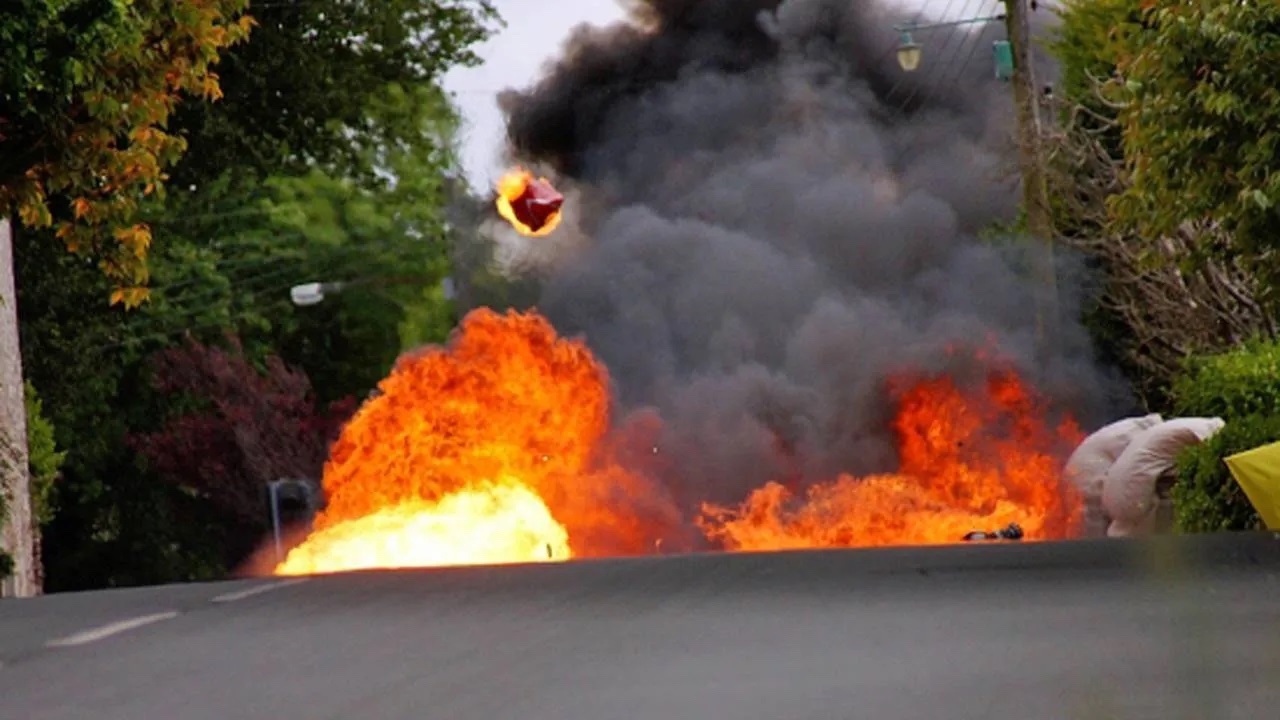
Since the first race of the Tourist Trophy at the Isle of Man in 1904, including the race this year, 265 riders have lost their lives on the course. It’s not for the prize money, which for the Senior TT (the top tier event) totals only about $20,000—barely enough to cover some teams’ costs.
As Guy explained while recovering in the hospital with a broken back, two bruised lungs, and almost all the ribs on his left side severely bruised (with a couple of them broken), they race it to get their name on the Senior TT trophy. They do it because it’s the razor’s edge of death, where many have said you feel the most alive.
They do it because, quite frankly, they’re addicted to the sheer danger of it all, and the adrenaline rush that balancing on that razor’s edge delivers.
The 2022 Isle of Man TT: A Deadly Return to the Island
We’ve talked about the reasons that the Isle of Man TT is still run. We’ve talked about why the riders still ride, fully aware that even a microscopic lapse of concentration could prove fatal, and sign waivers to that effect for each road race. However, in the history of the Man TT, it has only ever been canceled for both World Wars, an outbreak of foot-and-mouth disease in the UK in 2001, and for the global pandemic lockdowns in 2020 and 2021 that were implemented in the UK.
That meant that this year’s event was the first race back after nearly three years, and the entry sheets were filled all the way to the brim—including overflowing the waitlist entry forms in case a competitor couldn’t make it. The island’s population nearly doubled over the two weeks from May 29 to June 10, and while many of the races were dropped to three laps instead of the normal six after rain canceled a full day of racing, the island’s fierce reputation was upheld.
During those two weeks, five riders lost their lives—and two, at the time of this writing, are in critical condition in hospital.
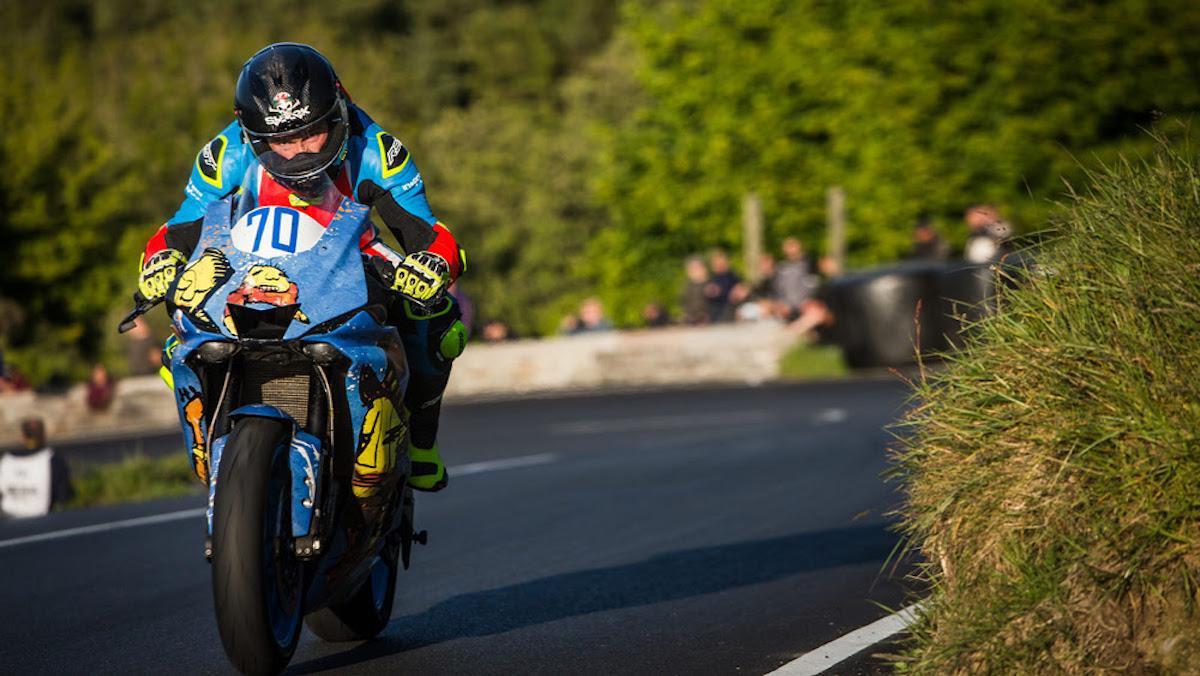
The first death, on June 2, was that of Mark Purslow, 29, a Welsh rider that had raced many of the road races and the Manx Grand Prix before racing in the 2017 TT and this year’s TT. During qualifying for the 600cc Supersport class, he lost control and crashed on his third and final lap at Ballagarey, making contact with the outside stone wall and being killed on impact.
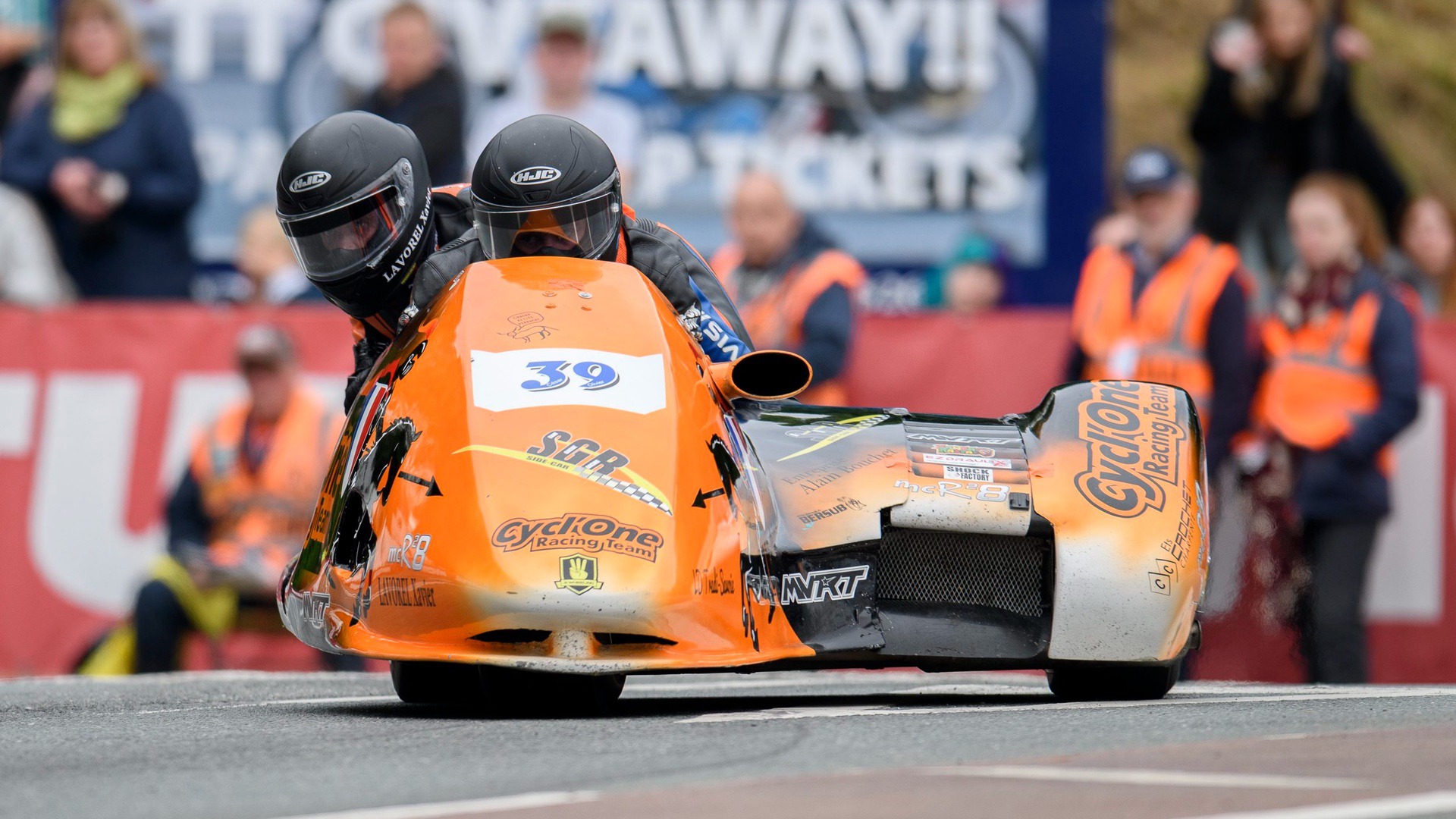
The second death occurred on June 4, during the first lap of the opening race of the Sidecar TT, when rider Cesar Chanal lost control at Ago’s Leap—the crest over the road right after Bray Hill, barely a mile into the course—and crashed heavily.
His passenger, fellow Frenchman Olivier Lavorel, was ejected from the bike on impact as he was not within the fairings, and was found unconscious with life threatening injuries. Cesar, in the sometimes brutally-honest reporting style of emergency medicine in the UK, had sustained “injuries incompatible with life” and was pronounced dead at the scene.
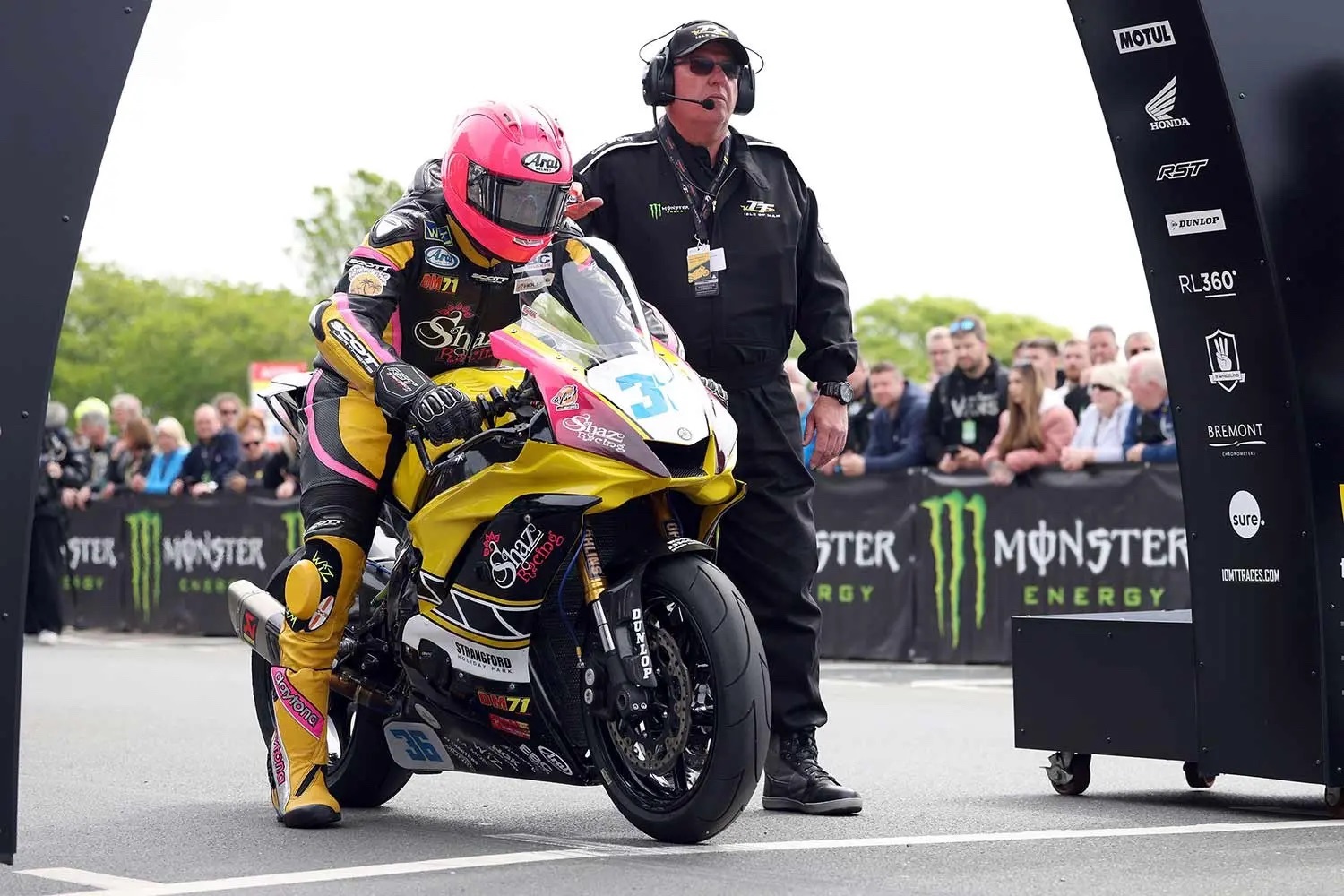
The third death, on June 6, was a very painful one for many fans, riders, and spectators, as Northern Irish road racer Davy Morgan, 52, on the third and final lap of the first Supersport TT race, suffered fatal injuries just beyond the 27th mile marker.
Davy had raced in every TT since he started his road race career in 2002, and was a well loved character at many of the great races. While details of what exactly happened are sparse, as the accident happened in the mountain section of the course without many spectators, the race was immediately red flagged and after all riders still on the course had made it back to the grandstand area, his death was announced.
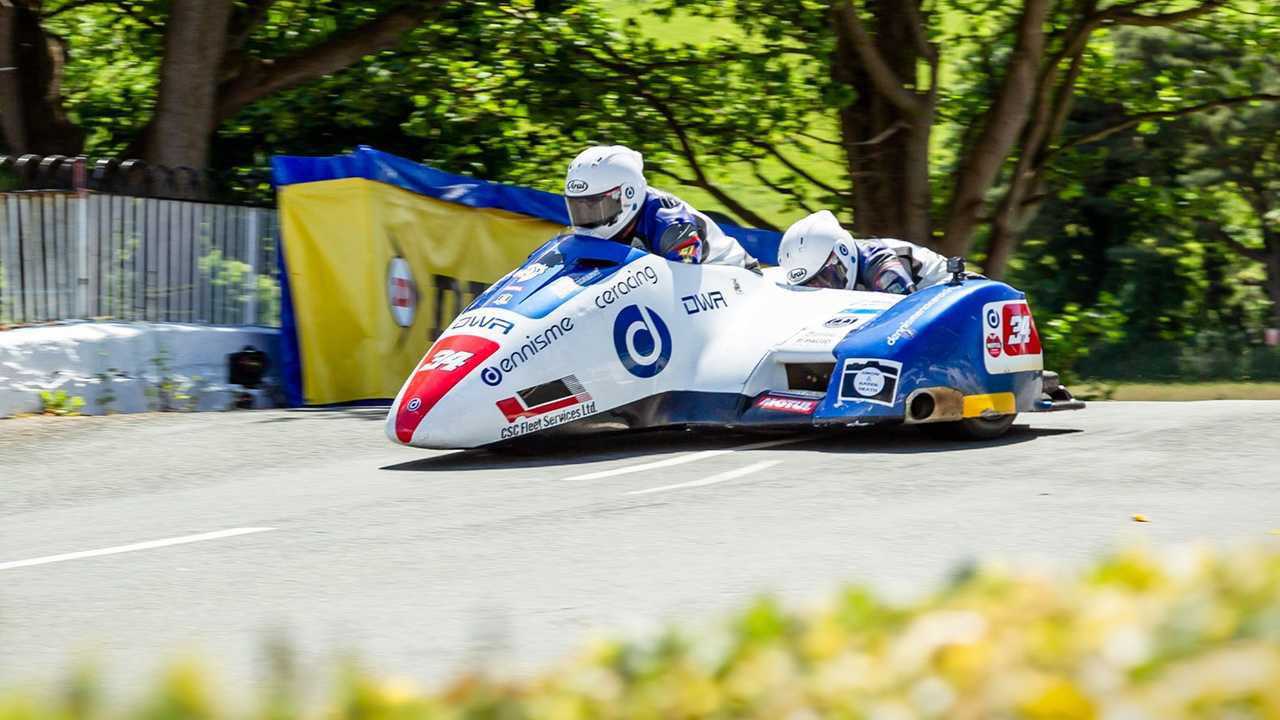
Perhaps the most tragic deaths of the 2022 Isle of Man TT took place on June 10, during the second and final lap of the second Sidecar TT race. Father and son team Roger and Bradley Stockton (56 and 21, respectively) were killed in what has been described as a brutal crash at Ago’s Leap.
Roger was immensely experienced in sidecar racing as the rider, regularly competing in the TT from 2000 to 2008, then again in 2010, 2017, and 2022. He also raced in the Sidecar Formula 1 and Formula 2 series, often finishing in the top 20 or top 10. This was Bradley’s first TT, after he joined his father to make the outfit a family team.
The reputation that the Isle of Man TT has attained—that of a dangerous addiction, one of the few places left in the world where you can dance on the razor’s edge of mortality—will continue to grow. Even with the five deaths this year, including three in sidecar racing, every single rider at the event still put on their helmets, flipped down their visors, and celebrated those lives lost the best way they knew how: by racing at the limit, knowing full well that all of them died doing what they loved the most.
That, to answer the original question, is why riders race when they know that death is but a mistake away.


